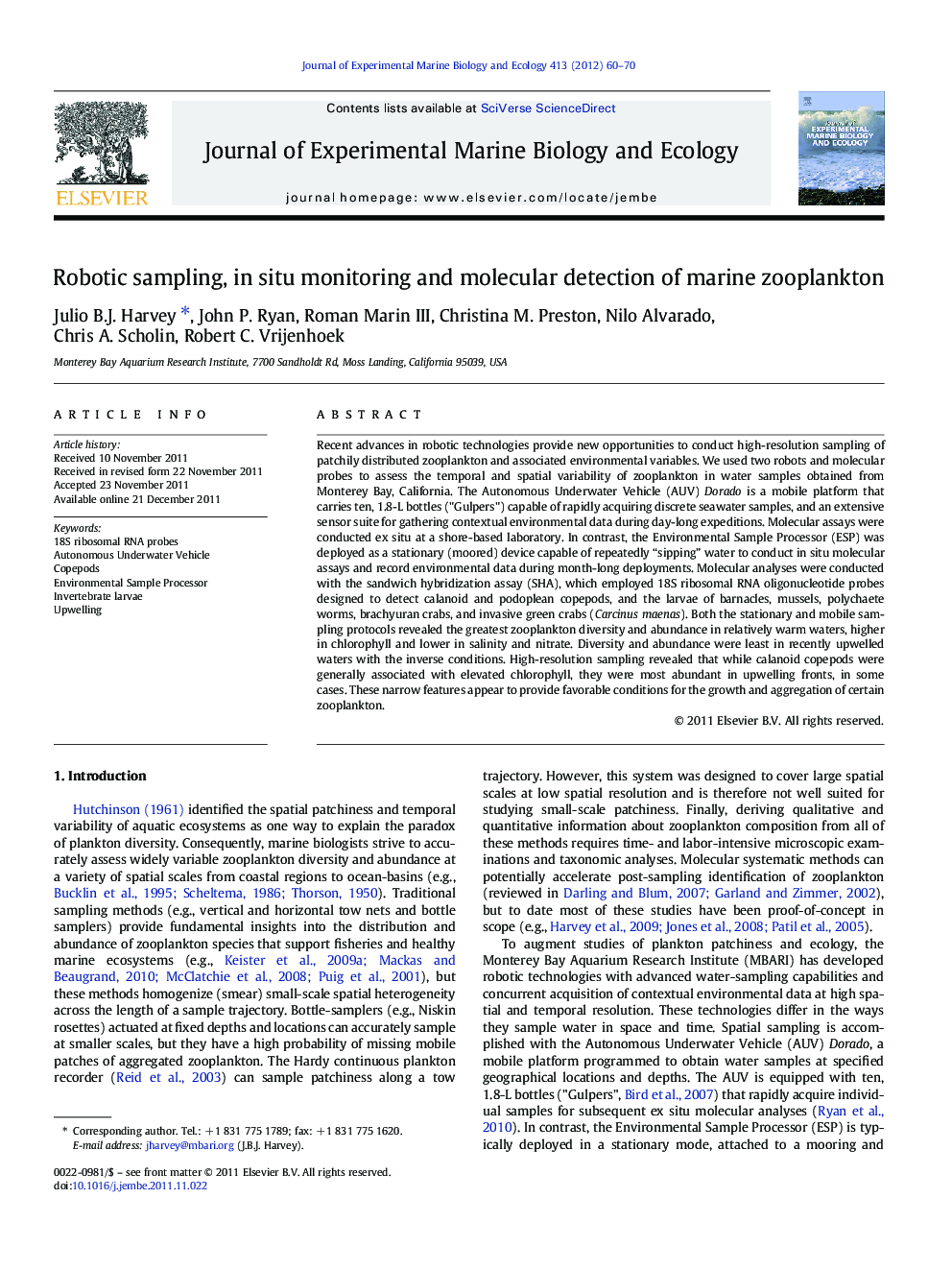| Article ID | Journal | Published Year | Pages | File Type |
|---|---|---|---|---|
| 4396127 | Journal of Experimental Marine Biology and Ecology | 2012 | 11 Pages |
Recent advances in robotic technologies provide new opportunities to conduct high-resolution sampling of patchily distributed zooplankton and associated environmental variables. We used two robots and molecular probes to assess the temporal and spatial variability of zooplankton in water samples obtained from Monterey Bay, California. The Autonomous Underwater Vehicle (AUV) Dorado is a mobile platform that carries ten, 1.8-L bottles ("Gulpers") capable of rapidly acquiring discrete seawater samples, and an extensive sensor suite for gathering contextual environmental data during day-long expeditions. Molecular assays were conducted ex situ at a shore-based laboratory. In contrast, the Environmental Sample Processor (ESP) was deployed as a stationary (moored) device capable of repeatedly “sipping” water to conduct in situ molecular assays and record environmental data during month-long deployments. Molecular analyses were conducted with the sandwich hybridization assay (SHA), which employed 18S ribosomal RNA oligonucleotide probes designed to detect calanoid and podoplean copepods, and the larvae of barnacles, mussels, polychaete worms, brachyuran crabs, and invasive green crabs (Carcinus maenas). Both the stationary and mobile sampling protocols revealed the greatest zooplankton diversity and abundance in relatively warm waters, higher in chlorophyll and lower in salinity and nitrate. Diversity and abundance were least in recently upwelled waters with the inverse conditions. High-resolution sampling revealed that while calanoid copepods were generally associated with elevated chlorophyll, they were most abundant in upwelling fronts, in some cases. These narrow features appear to provide favorable conditions for the growth and aggregation of certain zooplankton.
► Two robots and molecular methods assessed patchily distributed zooplankton. ► 18S RNA probes targeted major copepod groups and a variety of invertebrate larvae. ► Diversity and abundance generally covaried with chlorophyll. ► Calanoid copepod abundance was frequently greatest in upwelling fronts.
